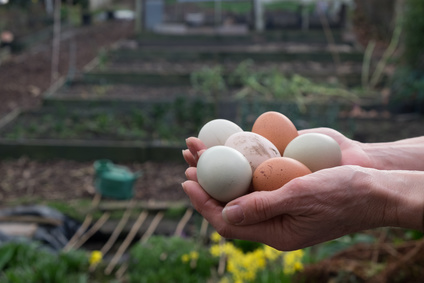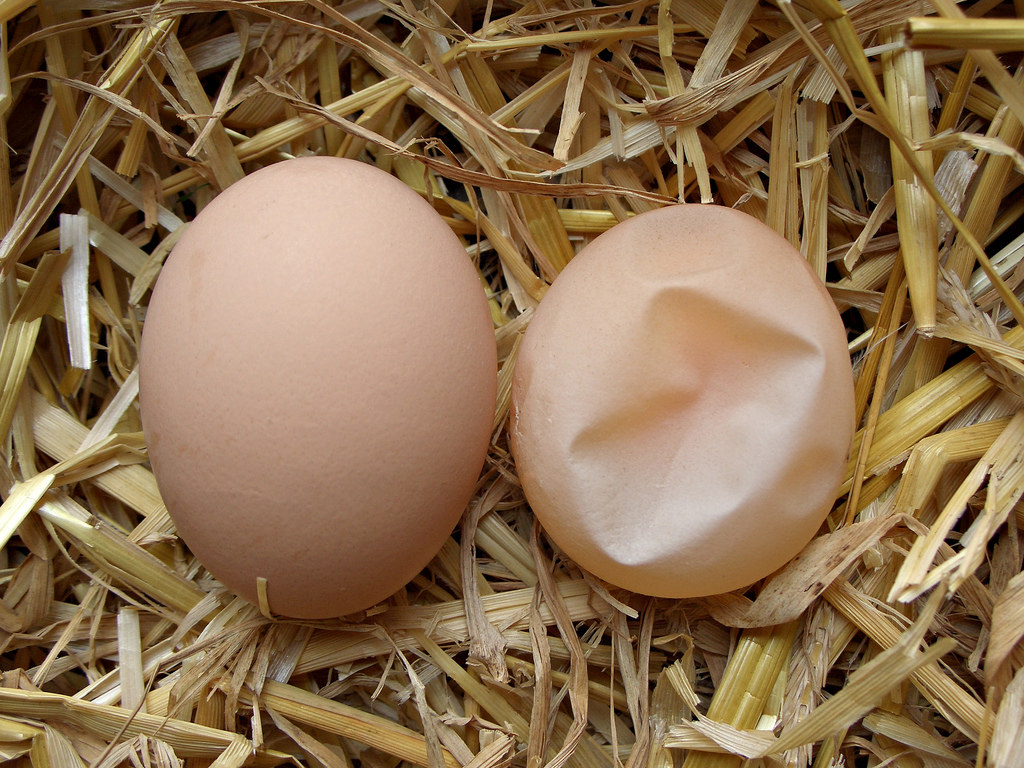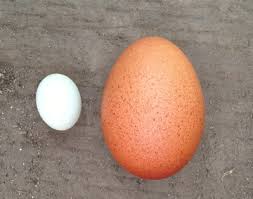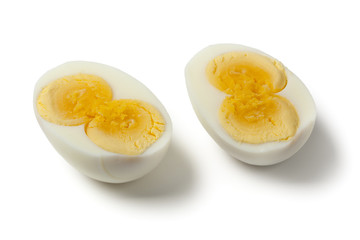 Chickens can be wonderfully rewarding pets, especially when they provide you with tasty, organic eggs. But if you own a brood it’s only a matter of time before you pick up the occasional egg and feel utterly bemused. Don’t worry, you’re not alone. Imperfections do happen, and while they can mean your chicken is stressed or sick, generally they’re not a cause for concern.
Chickens can be wonderfully rewarding pets, especially when they provide you with tasty, organic eggs. But if you own a brood it’s only a matter of time before you pick up the occasional egg and feel utterly bemused. Don’t worry, you’re not alone. Imperfections do happen, and while they can mean your chicken is stressed or sick, generally they’re not a cause for concern.
So what can you do? Here’s our guide to why your chicken eggs aren’t perfect, and what to do about it.
Speckled and pigmented eggs
Structurally, discolouration on the shell is a minor flaw so don’t be put off simply because your eggs aren’t a perfect snowy white. Heat stress is usually a trigger so make sure your coop isn’t too stuffy. Poor nutrition can also cause discolouration, with lack of zinc, copper and manganese thought to be especially important when it comes to transporting pigment to the shell. That said, a high profile National Geographic study found that speckled eggs could just be a way to make shells stronger or arm them with camouflage.
 Soft or “barely there” shells
Soft or “barely there” shells
We’re all used to eggs being encased in a hard outer shell, which means it’s pretty strange to stumble across a shell free egg. The membrane will still be intact which that you’ll basically be staring down at a yolk and its white. The shell is one of the last steps in the egg creation process which means that it’s easy to skip. They’re more common with younger hens whose reproductive systems haven’t quite kicked in yet. If your hen is an established layer insufficient calcium could be the culprit, so try switching to different feed. Heat stress is also a big one so make sure your chickens have plenty of shade and water. It’s best not to eat shell free eggs as they’re exposed to the elements of the chicken coop and you never know what kind of nasties could have passed through the membrane.
White bumps on eggs
From minor speckles to chalky build-ups, calcium deposits are one of the most common issues encountered by chicken owners. It’s usually an indicator of excess calcium in your hen’s diet so a few adjustments could be in order. Don’t worry, you can still eat the eggs.
 Pint sized eggs
Pint sized eggs
Also known as fairy eggs, these tiny morsels are typically laid without a yolk. If you enjoy egg whites you’re in luck, however if you like a rich, creamy omelette you’ll probably want to wait for another batch. They’re common in young hens and can also make an appearance when stress messes with the reproductive cycle.
White banded eggs
If you’re finding white bands on your eggs it’s simply a sign that two eggs entered the oviduct at the same time, then made contact in the shell gland pouch. This interrupts the normal calcification process and creates an extra layer, i.e. the white band. While you should keep an eye on your flock for unusual behaviour (white bands can be a sign of stress) they’re usually a one-off occurrence and are perfectly fine to eat.
Double yolkers
 Beyond exciting, double yolkers occur when a hen releases two eggs into the oviduct, then encases both in the same shell. Hello seriously delicious hollandaise sauce! While they do put stress on a hen’s body they’re generally quite rare (about one in a thousand to be precise) and are usually passed with no trouble.
Beyond exciting, double yolkers occur when a hen releases two eggs into the oviduct, then encases both in the same shell. Hello seriously delicious hollandaise sauce! While they do put stress on a hen’s body they’re generally quite rare (about one in a thousand to be precise) and are usually passed with no trouble.
Lash eggs
While they may look egg shaped, lash eggs are actually a result of an infection called “Salpingitis” which inflames the oviduct. They can be soft or hard and are composed of pus, egg material and tissue. Not a pleasant sight to stumble across first thing in the morning. While most commercial chickens are sent straight to the slaughter house, it’s much kinder to consult your vet and seek treatment.
Are you an expert, or should we say EGGspert? We’d love to hear your thoughts on imperfect eggs, so go ahead and share in the comments box below.









Join the Discussion
Type out your comment here:
You must be logged in to post a comment.